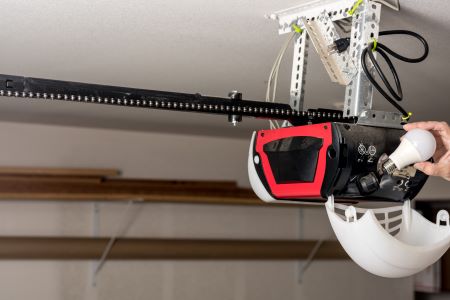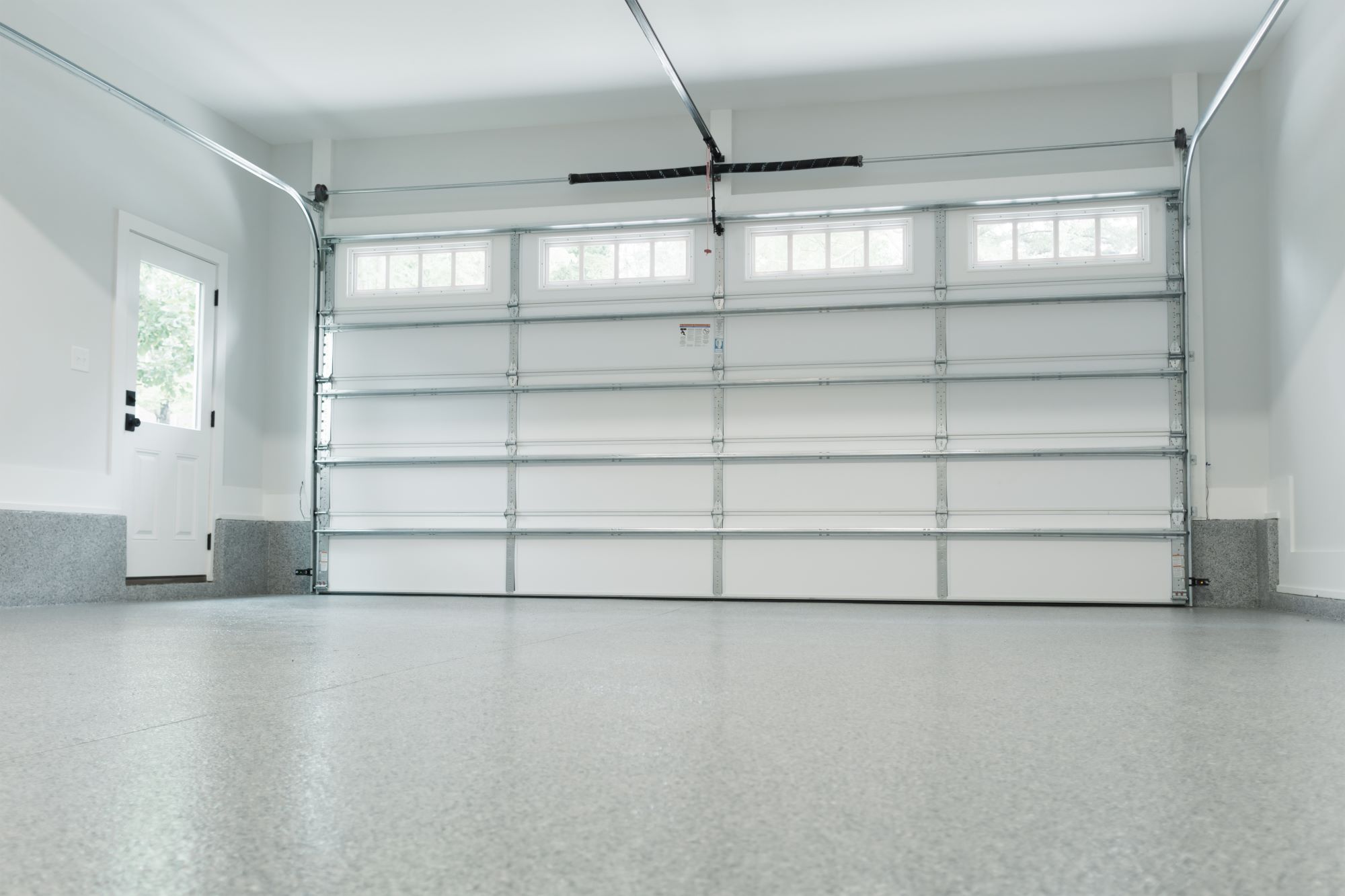Your garage door is an essential part of your home, providing security, convenience, and curb appeal. However, like any mechanical system, it can experience problems over time. Garage door issues can range from minor inconveniences to significant safety hazards. To ensure the longevity and reliability of your garage door system, it’s essential to take proactive measures in preventing future problems. In this comprehensive guide, we will explore various strategies and tips to help you avoid common garage door problems, including garage door opener repair, garage door spring repair, and the need for emergency garage door repair.
Regular Maintenance and Inspection
1. Visual Inspection
One of the simplest yet most effective ways to prevent future garage door problems is through regular visual inspections. By examining your garage door system periodically, you can identify potential issues before they escalate. Here are some key components to inspect:
Tracks and Rollers: Check for any misalignment, damage, or debris that could hinder smooth operation.
Springs: Look for signs of wear, rust, or loose cables on the garage door springs.
Cables: Ensure that the cables are in good condition, without fraying or visible damage.
Hinges and Hardware: Tighten loose bolts and lubricate moving parts to reduce friction.
Seals and Weatherstripping: Ensure that the seals are intact to prevent drafts and water intrusion.
2. Lubrication
Proper lubrication is crucial for the smooth operation of your garage door. Apply a silicone-based or lithium-based lubricant to the following components:
Rollers: Lubricate the rollers to reduce friction and prevent wear.
Hinges and Pivot Points: Apply lubricant to the hinges and pivot points to ensure they move freely.
Springs: Lightly coat the garage door springs with lubricant to extend their lifespan.
Tracks: Lubricate the tracks to prevent rust and ensure the rollers move smoothly.
3. Balance and Alignment
A well-balanced garage door is less likely to encounter problems. To check the balance:
Close the garage door and disconnect the opener.
Manually lift the door halfway; it should remain in place.
If it doesn’t, there may be a spring or cable issue that requires attention.
Additionally, ensure that the tracks are aligned correctly. Misaligned tracks can cause the door to operate unevenly, leading to premature wear.
Garage Door Opener Maintenance
1. Testing and Adjustment
Your garage door opener plays a crucial role in the operation of your garage door. To prevent future problems:
Test the auto-reverse feature by placing an object in the door’s path. The door should reverse immediately upon contact.
Adjust the force settings on the opener to ensure it doesn’t exert excessive force while closing.
2. Battery Replacement
Most garage door openers rely on backup batteries to function during power outages. Regularly replace these batteries to ensure your opener remains operational when you need it the most.
3. Remote Control Security
Secure your garage door remote controls to prevent unauthorized access to your garage. You can:
Change the remote control code periodically.
Invest in rolling code technology, which changes the access code with each use.
Keep the remote control out of sight when not in use.
Garage Door Spring Maintenance
1. Understanding Garage Door Springs
Garage door springs are under significant tension and are crucial for the door’s operation. There are two main types:
Torsion Springs: These are mounted above the door and wind and unwind to counterbalance the door’s weight.
Extension Springs: These are typically mounted on either side of the door and expand and contract to provide lifting force.
Regular maintenance of these springs is essential to prevent future problems.
2. Spring Inspection
Perform regular inspections of your garage door springs:
Look for signs of wear, rust, or damage.
Check for loose cables or cables that appear frayed.
Listen for any unusual sounds when operating the door.
If you notice any issues, it’s essential to address them promptly to avoid sudden spring failure, which can be dangerous.
3. Spring Replacement
Garage door springs have a limited lifespan, typically ranging from 5 to 10 years, depending on usage. If your springs are reaching the end of their lifespan or showing signs of wear, consider replacing them proactively. It’s recommended to hire a professional for this task, as working with garage door springs can be extremely hazardous.
Weatherproofing and Insulation
1. Weatherstripping
Weatherstripping around your garage door helps keep out drafts, moisture, and pests. Inspect the weatherstripping regularly and replace it if it’s worn or damaged. Proper weatherstripping can also help maintain the integrity of your garage door seals.
2. Insulation
Insulating your garage door not only helps regulate the temperature inside your garage but also reduces stress on the door and opener. Insulated doors are less prone to problems caused by temperature fluctuations. Consider adding insulation if your garage door lacks it.
Garage Door Care During Extreme Weather
1. Extreme Cold
During cold weather, your garage door may become stiff, making it more susceptible to damage. To prevent problems:
Keep the tracks clear of ice and snow.
Lubricate the moving parts, but use a low-temperature grease.
Consider a garage door heater or insulating the garage to maintain a more stable temperature.
2. Extreme Heat
High temperatures can cause expansion and contraction of garage door components. To prevent issues:
Ensure proper lubrication to reduce friction caused by heat.
Check the garage door opener for overheating and install additional ventilation if necessary.
Keep the garage well-ventilated to reduce heat buildup.
Professional Garage Door Maintenance

1. Scheduled Professional Inspections
While regular DIY maintenance is essential, it’s also crucial to schedule professional garage door inspections at least once a year. A professional technician can identify and address potential issues that may not be apparent during a visual inspection.
2. Garage Door Opener Repair
If you notice any unusual noises, slow operation, or other issues with your garage door opener, it’s best to seek professional garage door opener repair services. Trying to fix the opener yourself can lead to further problems and safety hazards.
3. Garage Door Spring Repair
Garage door spring repair is a dangerous task and should only be performed by experienced professionals. Attempting to repair or replace garage door springs without the necessary expertise and tools can result in serious injuries.
Safety Measures
1. Child Safety
Garage doors can be hazardous to children. Implement the following safety measures:
Keep remote controls out of reach of children.
Teach children about the dangers of garage doors and the importance of not playing near them.
Consider installing safety sensors that can detect obstructions in the door’s path.
2. Emergency Garage Door Repair
Despite all preventive measures, emergencies can still occur. It’s essential to know how to handle emergency garage door situations:
Familiarize yourself with the emergency release mechanism on your garage door opener.
Keep the contact information of a reliable emergency garage door repair service handy.
Upgrading Your Garage Door
1. New Garage Door Installation
If your garage door is old, showing signs of wear, or constantly requiring repairs, it may be more cost-effective in the long run to invest in a new garage door installation. Modern garage doors come with advanced safety features and improved energy efficiency.
2. Smart Garage Door Openers
Consider upgrading to a smart garage door opener. These openers offer remote access, real-time alerts, and the ability to monitor and control your garage door from your smartphone. Smart openers can enhance security and provide convenience.
Educating Yourself
1. DIY Resources
Take advantage of the wealth of resources available online and in books on garage door maintenance and repair. Learning the basics can help you perform routine maintenance and identify minor issues.
2. Maintenance Schedules
Create a maintenance schedule and checklist to ensure you don’t overlook any crucial tasks. Regularity is key to preventing future garage door problems.
Preventing future garage door problems involves a combination of regular maintenance, proactive measures, and occasional professional assistance. By taking the time to inspect, maintain, and care for your garage door system, you can avoid common issues that may require garage door opener repair, garage door spring repair, or emergency garage door repair. Remember that safety should always be a top priority, and when in doubt, seek the expertise of a professional garage door technician to ensure the safety and functionality of your garage door for years to come.
- Garage Door Repair Portland
- Garage Doors Portland
- Broken garage door springs beaverton
- Garage Doors Beaverton
- Garage Door Repair Lake Oswego
- Garage Doors Lake Oswego
- Garage Doors Aloha
- Garage Door Repair Tualatin
- Garage Doors Tualatin
- Garage Door Repair Wilsonville
- Garage Doors Tigard
- Garage Doors Hillsboro
- Garage Doors Wilsonville
- Garage doors Oregon City
- Garage Doors Sherwood
- Broken garage door springs hillsboro
- Garage door repair forest grove
- Garage door repair newberg
- Garage door repair west linn
- Broken Garage Door Springs Aloha OR
- Garage Door Repair Hillsboro
- Broken Garage Door Springs Lake Oswego
- Broken Garage Door Spring Hillsboro
- Broken Garage Door Springs Portland
- Garage Door Spring Repair Portland
- Garage Door Repair Beaverton
- Garage Door Repair Sherwood
- Garage Door Spring Repair Tigard
- Garage Door Spring Repair Wilsonville
- Garage Door Spring Repair Oregon City
- Garage Door Spring Repair West Linn
- Garage Door Installation Tualatin
- Garage Door Installation Wilsonville
- Garage Door Installation West Linn
- Garage Door Installation Beaverton
- Garage Door Installation Hillsboro
- Garage Door Installation Tigard
- Garage Door Spring Repair Beaverton
- Garage Door Spring Repair Hillsboro
- Automatic Gate Installation Newberg OR
- Automatic Gate Installation Wilsonville OR
- Automatic Gate Installation Oregon City OR
- Garage Door Opener Installation Portland OR
- Garage Door Opener Installation Hillsboro OR
- Garage Door Opener Installation Wilsonville OR
- Garage Doors Milwaukie OR
- Garage Door Repair Milwaukie OR
- Garage Door Installation Milwaukie OR



